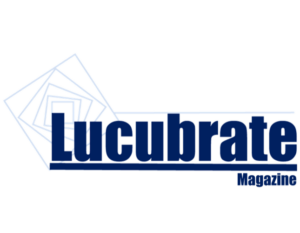[This post has already been read 1297 times!]
Integration of technology into teaching and learning is not new, but the rapid rate and pace of technological advancement are unique, especially regarding the Internet, ICT and digital technologies. The digital era has transformed all aspects of our life. It defines how we live, work, travel, socialise, and, what’s more important, it changes the way we learn and educate.
Digitalisation is changing all facets of society, not just work environments. The transformation occurs with or without strategic initiatives that ensure the ongoing quality of teaching and learning environments in educational contexts.
Digitalisation is Changing the Field of Education
The field of education is mainly reactive, as new disruptive technologies develop in other industries and are then applied and accommodated into existing educational cultures and systems.
The idea of digitalisation has been in the air since the late ’90s. When the world faced strict lockdown rules, digitising the education sector became vital. However, during the 2020 COVID outbreak, digitalisation challenged the educational industry. Near all pupils and students found that the schools closed for a shorter or longer period.
While closures of schools and universities have hit traditional educational systems especially hard, they have still been able to withstand the storm with the help of digital learning tools. In fact, pandemic restrictions skyrocketed the demand for digital educational technologies altogether.
From schools to universities, the education sector has been deeply impacted, and we have certainly seen the emergence of new models and teaching approaches that are different from those we are used to. At the international level, universities and business schools have been forced to transform some or all of their face-to-face courses into online programs to allow students in lockdown to work from home and continue their studies.
The need for digital tools, the Internet and educational programs exploded. The same has happened to MOOC (Massive Open Online Courses) and other digital agendas for the educational process.
Restructuring of the Teaching Approach
A challenge in this transformation is recognising that online teaching is not limited simply to using a digital platform to replicate what would have been taught in the classroom. In fact, learning in a digital context requires a profound restructuring of the teaching approach and different digital tools to meet various educational objectives.
In a paper published in 2021, the authors argue that the relationship between humans and digital technologies is shifting. This has severe implications for constructing knowledge and arriving at valid responses to complex challenges. Furthermore, the article points to the rapid development in robotics, artificial intelligence, and objects with intent (OwIs). This transformation will contribute to increasingly experiencing non-humans as partners and, potentially, masters. The article tells that teacher educators and student teachers need to be aware of and respond to the epistemological consequences of accessing and using (mobile) hardware and assorted software. IT programs for teachers aspire to foster professional digital competence and educate students for today’s schools. [1]
The New Normal
Professor Federico Frattini uses the term “the new normal” to describe the digitalisation in education through the pandemic period. He emphasises that the “new normal” will not create a widespread or extensive shift from face-to-face training to online training. This is because face-to-face training has excellent benefits, not least that it allows you to develop more prosperous interpersonal relationships. Yet traditional face-to-face paths will undoubtedly be increasingly amplified and integrated with digital tools, he says. For example, we will see blended training models with a digital and online experience mix. Furthermore, the number of face-to-face programs will probably increase, enabling students to follow the same lessons in streaming mode from a distance.[2]
Of course, the “new normal” within the education sector will be profoundly different from what we know today, and there is no doubt that the digital world will play a decisive role in this transformation. (Professor Federico Frattini )
Indeed, this evolution will require universities and schools to undertake profound reflection and acceleration of investments and experiences in applying for digital tools and programs.
References
[1] Andreas Lund and Toril Aagaard, Digitalization of teacher education: Are we prepared for epistemic change? Utdanningsforskning.no, 2021 [2] Federico Frattini, The acceleration of digitalisation within education as a result of COVID-19, EFMD Business Magazine, 2021
Lucubrate Magazine February 2022
The photo on the top of the article: Adobe Stock

If there were ever a time to join Lucubrate NKB, it is now. Every contribution, however big or small, powers our journalism and sustains our future. Support Lucubrate Magazine for as little as $1 – it only takes a minute.
Views: 595





